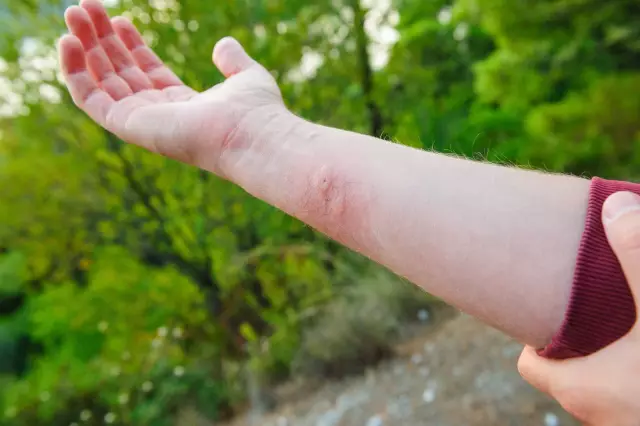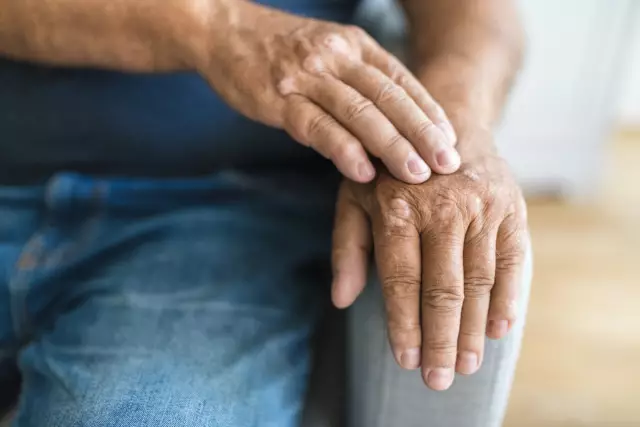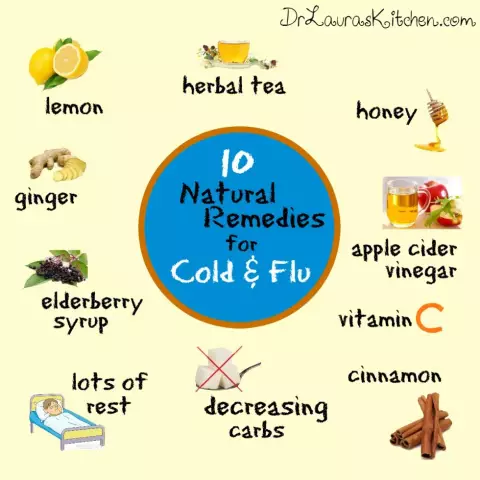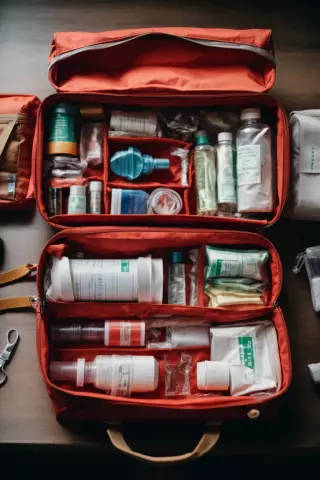- Author Rachel Wainwright [email protected].
- Public 2023-12-15 07:39.
- Last modified 2025-11-02 20:14.
First aid for a wasp sting

Rarely are people who have never been stung by a wasp in their life - unfortunately, the attack of these insects is a very frequent phenomenon, especially in the hot summer months. The wasp sting is extremely painful, but much worse - it often causes an allergic reaction. And if in most cases it is possible to get rid of short-term, albeit intense, pain and swelling at the site of the bite, it sometimes happens that a person stung by a wasp can go to the hospital or even die. This usually happens when the victim has allergic diseases, for example, bronchial asthma, or with multiple bites.
It has been established that several simultaneous bites of wasps can cause a general toxic reaction of the body, the simultaneous receipt of 500 bites is definitely fatal. Therefore, if it happened that a person was attacked by three or more wasps, it is necessary to immediately call an ambulance, or independently deliver him to the hospital as soon as possible.
However, even one wasp sting can lead to serious and even life-threatening consequences. This is possible in the following situations:
- Wasp stung in the face or neck;
- The wasp entered the mouth and stung the tongue, throat, cheek or lip from the inside.
In these cases, immediate medical attention is also required.
First aid measures for a wasp sting
It is impossible not to notice a wasp bite. As soon as you feel a burning pain, you need to make sure that you were bitten by a wasp, not a bee. This is easy to do - if a bee stung, then a sting remains in the wound, which must be removed. If a wasp, then there will be no sting, since in wasps it does not get stuck in the skin and does not break off, like in bees. So, if it is established that the wasp stung. The procedure is as follows:
- Wash the bitten area with warm water and soap;
- Treat the wound with an antiseptic (hydrogen peroxide, brilliant green, Fukortsin and in general any alcohol-containing agent will do);
- If possible, apply a saline compress to the wound - moisten a piece of cotton wool in a saline solution (stir one teaspoon of salt in a glass of water) - this will help soothe the pain. For the same purpose, you can use a cold compress (ice, cold bottle, ice cream packaging);
- Take an antihistamine (Suprastin, Diazolin, Tavegil, Loratadin, etc.). It is especially important to do this when a person has a tendency to allergies, and to do it quickly, without waiting for the manifestation of an allergic reaction. Also, an antihistamine is necessary for children, since, due to the characteristics of the immune system, their reaction can be very violent.
Folk remedies as first aid
A person's contact with a wasp occurs suddenly, and soap, warm water and antiseptics may not always be at hand. In this case, you can apply one of the folk methods of first aid. These tools, although simple, are time-tested and quite effective:
- The acid destroys the wasp venom, so the wound can be treated with lemon juice or 6-9% vinegar, and if they are not at hand - with a crushed sour berry, a crushed sorrel leaf;
- Parsley juice will help soothe the pain after a bite (to get it, it is enough to grind a few parsley leaves with your fingers), or dandelion milk juice;
- As an emergency decongestant and antiseptic, plantain leaves or calendula flowers, also known as marigolds, are suitable. You can use aloe and Kalanchoe juice.
If there is no pronounced allergic reaction, manifested in the growth of redness and swelling in the stung place, the appearance of itching, rash, suffocation, etc., then these first aid measures may be sufficient. If the above symptoms appear, it is necessary to take an antihistamine as soon as possible and consult a doctor.
Typically, pain and swelling will subside within a few hours, and redness and slight swelling at the site of the bite may last for several days.
Found a mistake in the text? Select it and press Ctrl + Enter.






